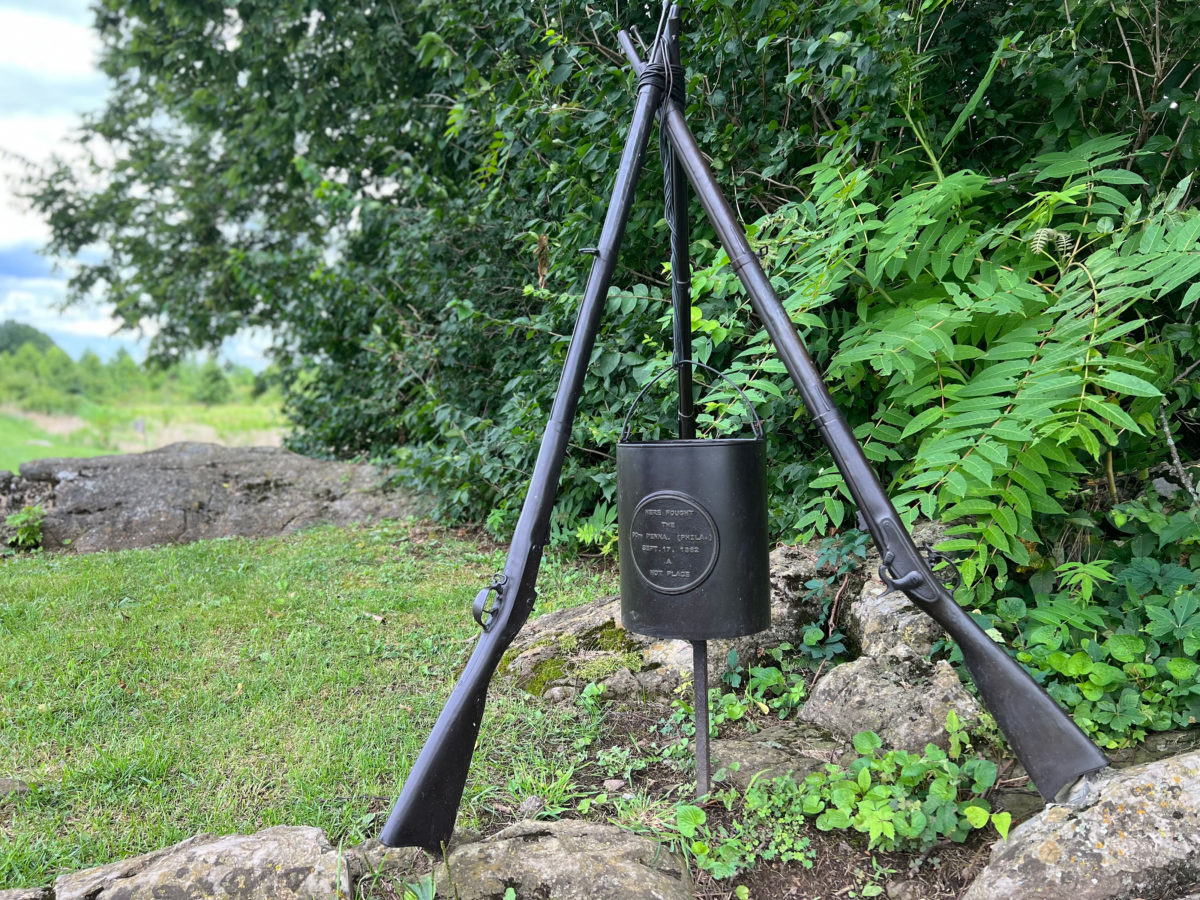Antietam National Battlefield is a place to remember, reflect and pay tribute to the 23,110 men who shed so much blood on that sad September day so long ago. What came out of the crucible at Antietam was a new direction for the war and a renewed promise of freedom for the divided nation.
People began touring the battlefield almost before the smoke had even cleared. And as visitors roamed the scarred, rolling countryside, they began contemplating ways to commemorate the valor and sacrifice that the melancholy landscape had witnessed.
Vastly less adorned by monuments than Gettysburg, its sister park to the north, Antietam has benefited in that its landscape still appears much as it did in 1862. The memorials that do exist, even the larger ones, are so well placed or appropriately designed that they never look obtrusive.
The towering obelisk of the New York State Monument is a regular rallying point for ranger-led hikes, and the beaux-arts Maryland monument provides a nice backdrop for the opening of the Memorial Illumination ceremony held each December. The park’s Pennsylvania “toy soldier” monuments feature slightly larger-than-life granite soldiers in various stages of loading their guns.
One of the smallest, but most poignant monuments of the field, is that of the 90th Pennsylvania Volunteer Infantry Regiment monument on Cornfield Avenue. The memorial includes three bronze, stacked rifles, with a large coffee boiler suspended beneath them. The boiler bears the legend: “HERE FOUGHT THE 90TH PENNA. (PHILA.) SEPT. 17, 1862 A HOT PLACE.” Dedicated in 2004, it is a permanent recreation of one of the battlefield’s first memorials.
The original structure appeared without fanfare sometime in the 1880s. A group of middle-aged men, veterans of the regiment, convened at the battlefield to erect a monument to their efforts in the battle. They stacked arms, three original Springfield rifles, with bayonets fixed. Within the pyramid formed by the rifles they suspended a large coffee boiler, that ubiquitous staple of camp life 20 years earlier, emblazoned with the “…A HOT PLACE” legend. Perhaps to further make their point, or as a hedge against souvenir hunters, they repeated the message on a plank nailed to a nearby tree.
That “hot place” was the southern edge of the Miller Cornfield, where the 90th Pennsylvania found itself at 7 a.m. on September 17, 1862, rushing to aid of Brig. Gen. George L. Hartsuff’s brigade. As the men of the 90th arrived and formed their line of battle, they found themselves alone and unsupported, but they steadfastly bought time for shattered Union regiments to retire to safety.
Twenty years later, these men had come to honor their 98 comrades killed or wounded in that intense 30 minutes of combat. Whatever ceremony or moments of reflection they shared to mark the event is long lost to time. But when the veterans again made their separate ways home, they left behind this simple, temporary and heartfelt statement of duty, fidelity and valor.
Time and the elements eventually took their toll on the memorial and veterans alike. Although the wooden rifle stocks slowly continued to crack and rot, and the once-brilliant barrels and case-hardened hammers had rusted thin, the fading monument was at least outlasting the men who had placed it on the field. As the unit’s veterans succumbed to time one by one, their simple memorial persevered, standing sentinel upon the ground marking their sacrifice.
Concerned both by further deterioration and the threat of vandalism, park authorities in the 1930s finally dismantled the crumbling tribute the unassuming 90th Pennsylvania vets had raised a half-century earlier.
The veterans’ descendants, however, got together in subsequent years to fund a bronze replica of the original. Created by noted artist/sculptor Gary Casteel, the replica was dedicated during the battle’s anniversary weekend in 2004.
On your next visit to Antietam, take time to stop by and pay tribute to this simple memorial first erected by a group of young men from Philadelphia who grew up fast on September 17, 1862.
Manuel Gentile is a park ranger at Antietam National Battlefield, near Sharpsburg, Md.
Originally published in the September 2009 issue of America’s Civil War.





